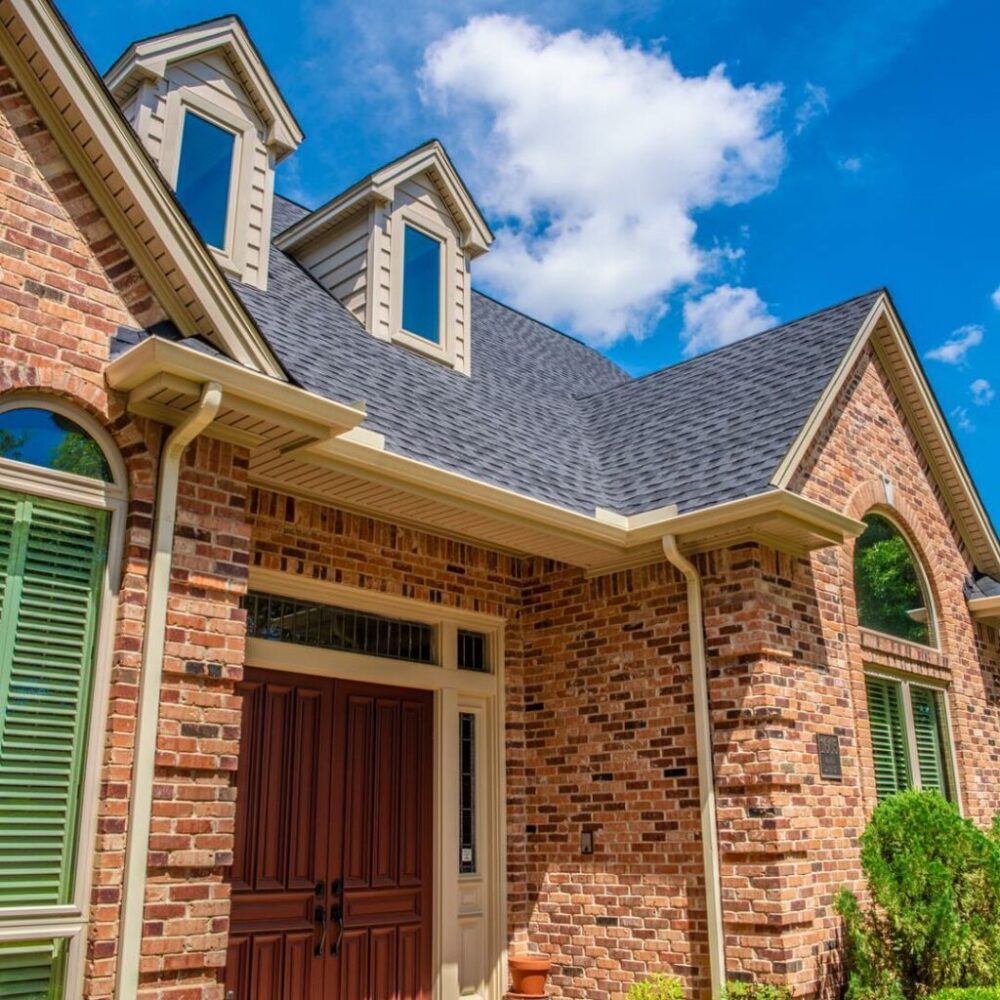Why Your Old Gutters Are Failing: Common Problems in Dallas-Area Homes
Dallas Weather and Aging Gutters: Understanding the Root Causes of System Failures
If you’re a homeowner in Rockwall, Plano, Rowlett, or the greater Dallas area, you’ve likely noticed signs that your gutters aren’t performing as they should. From water stains on your siding to foundation issues around your home, failing gutters create a cascade of problems that can cost thousands in repairs if left unchecked. At Quint-Pro Siding & Windows, we’ve helped countless North Texas homeowners understand why their gutter systems fail and how to prevent costly water damage through professional installation and maintenance.
With Dallas averaging 39 inches of rainfall annually across approximately 80 days of precipitation, your gutters work harder than you might realize. Our extreme North Texas climate—from scorching summers that reach 96°F to sudden spring thunderstorms and occasional winter freezes—puts tremendous stress on aging gutter systems. As experienced professionals serving Rockwall and surrounding communities, we understand the unique challenges Dallas-area homes face and the critical role properly functioning gutters play in protecting your most valuable investment.

North Texas Weather: The Primary Culprit Behind Gutter Failures
Extreme Temperature Fluctuations Stress Gutter Materials
Dallas-Fort Worth experiences some of the most challenging weather conditions for residential exteriors, with temperature swings that can span 60+ degrees between winter lows of 39°F and summer highs above 96°F. These dramatic fluctuations cause repeated expansion and contraction cycles that weaken gutter joints, loosen fasteners, and create stress fractures in sectional gutter systems over time.
Traditional sectional gutters are particularly vulnerable because each joint represents a potential failure point. As materials expand in summer heat and contract during cooler months, the sealants and fasteners at these joints gradually deteriorate, leading to leaks that worsen with each weather cycle.
Spring and Summer Storm Damage
North Texas is renowned for sudden, intense thunderstorms that can dump several inches of rain in short periods, particularly during spring and early summer. These torrential downpours overwhelm aging gutter systems, from debris clogging to structural failure under heavy water loads.
When gutters can’t handle the volume of water from these intense storms, overflow occurs, directing water directly against your home’s foundation, siding, and landscaping. Over time, this repeated water exposure causes foundation settling, wood rot in fascia boards, and moisture infiltration that can lead to interior damage and mold growth.
Sectional Gutter Systems: Built-In Failure Points
Why Seams and Joints Create Ongoing Problems
Most older homes in the Dallas area were equipped with sectional gutters—systems made from multiple pieces joined together with brackets, fasteners, and sealant. While cost-effective initially, these systems inherently contain numerous failure points where sections connect.
Each seam in a sectional system represents a location where debris can catch, water can leak, and structural stress concentrates. As these joints age and weather exposure takes its toll, they require increasingly frequent maintenance and repairs. Homeowners often find themselves on a frustrating cycle of patching leaks and re-sealing joints, only to discover new problems after the next major storm.
The Hidden Cost of Constant Maintenance
Beyond the obvious inconvenience, sectional gutters’ hidden costs add up quickly. Regular cleaning becomes more difficult as debris catches at joint points, and minor repairs become major replacements when multiple sections fail simultaneously. Many Dallas-area homeowners discover that their “budget-friendly” sectional gutters actually cost more over their lifetime than investing in a superior system from the beginning.
Debris and Clogging: A Persistent Dallas Problem
Oak Trees and Seasonal Debris Challenges
Dallas-area neighborhoods are known for their beautiful mature trees, particularly native oaks, pecans, and elms that provide valuable shade during brutal summer months. However, these same trees create year-round challenges for gutter systems through constant debris accumulation.
Fall brings the obvious challenge of dropping leaves, but Dallas homeowners also contend with spring pollen, seed pods, small branches from summer storms, and the notorious “oak worms” that periodically affect local oak trees. This constant debris stream clogs gutters, creates weight stress on mounting systems, and traps moisture that accelerates deterioration.
When debris clogs gutters, several problems develop simultaneously. Standing water provides breeding grounds for mosquitoes and creates conditions for rust and corrosion. The additional weight from water and debris stresses mounting brackets and can cause gutters to pull away from the fascia board.
Foundation and Structural Risks
Dallas Clay Soil Complications
The Dallas-Fort Worth metroplex sits on expansive clay soil that presents unique challenges for home foundations. This soil type expands significantly when wet and contracts dramatically during dry periods, creating ground movement that affects foundation stability.
When gutters fail to properly direct water away from foundations, the resulting soil saturation exacerbates clay soil expansion and can contribute to foundation settling, cracking, and other structural issues. Given that foundation repairs in North Texas can cost tens of thousands of dollars, proper water management through functional gutters represents crucial protection for your investment.
Preventing Moisture Infiltration
Failed gutters also contribute to moisture problems in areas where your home’s exterior components meet. When water overflows or leaks from damaged gutters, it saturates fascia boards, soffits, and siding materials that weren’t designed for constant moisture exposure. For homeowners who have recently invested in new siding, protecting that investment with properly functioning gutters becomes even more critical.
Signs It’s Time for Professional Gutter Replacement
Several clear warning signs indicate that repair isn’t sufficient and full replacement is necessary. These include multiple areas of rust or corrosion, gutters pulling away from the roofline, water stains on siding below gutters, and pooling water around your foundation after rainfall.
Other indicators include peeling paint on fascia boards, visible cracks or holes in gutter sections, and gutters that require cleaning more frequently than twice per year despite normal debris loads. If you’re experiencing multiple issues simultaneously, replacement typically proves more cost-effective than ongoing repairs.
Modern seamless gutter systems eliminate most failure points that plague sectional systems. Custom-fitted to your exact roofline measurements, seamless gutters feature joints only at corners and downspout connections, dramatically reducing leak potential and maintenance requirements. These systems also handle North Texas weather conditions more effectively, with higher capacity for intense rainfall and materials specifically chosen for thermal stability in our extreme climate.
Ready to protect your Dallas-area home with professional gutter installation that stands up to North Texas weather? Contact Quint-Pro Siding & Windows today for your comprehensive consultation and discover how our seamless aluminum gutters can end your ongoing maintenance headaches while protecting your foundation, siding, and landscaping investment.
